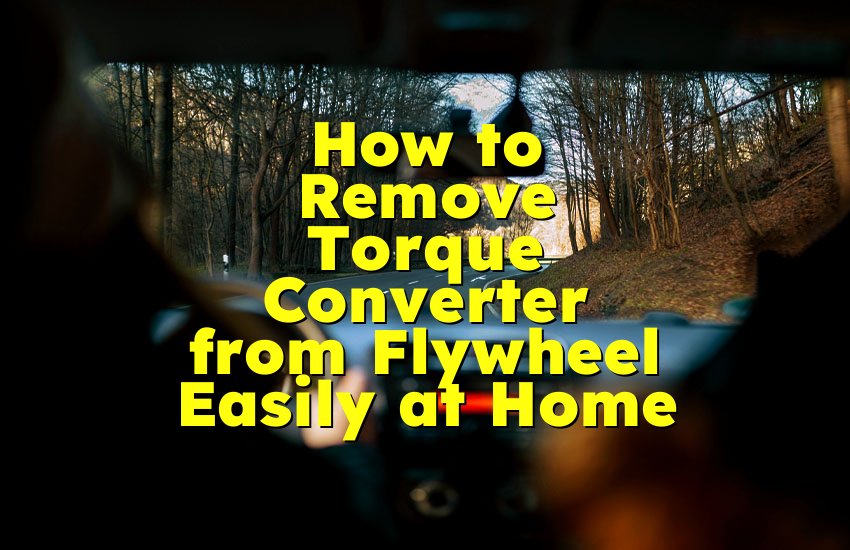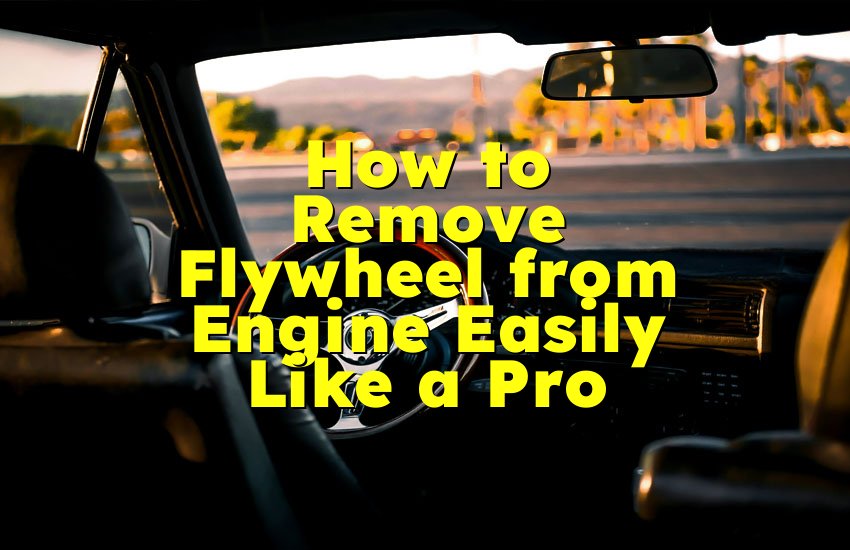As an Amazon Associate, I earn from qualifying purchases at no extra cost to you.
How to Add an Air Horn to Any Car Horn: The Ultimate DIY Guide
You probably love the sound of your car horn—until you hear a loud, thunderous air horn blast from a truck nearby. Suddenly, your regular beep-beep feels weak. You've imagined what it would be like to replace your horn with something that turns heads and demands attention. If that's the case, you're in the right place! In this article, you'll learn exactly how to add an air horn to any car. Whether you drive a sedan, pickup, or compact car, you can do this!
What Do You Need Before Installing an Air Horn?
Before you dive into wiring and mounting your new air horn, it's important to prepare the right tools and knowledge. This section covers everything you'll need in advance to ensure the process goes smoothly from start to finish.
Choosing the Right Air Horn Kit for Your Car
There are different kinds of air horns available, and not all are created equal. Some are designed for big rigs, while others work just fine for smaller passenger vehicles. If you're looking for volume, go for a dual-trumpet or triple-trumpet air horn. These models tend to be louder and deliver a more noticeable blast.
Make sure the horn kit you choose is compatible with 12-volt systems, which is what most cars use. Kits with built-in compressors or ones that come with a separate air compressor are common. If you want more power and a deeper tone, get a kit with a larger compressor and tank.
Also, check the dimensions of the air horn. If you're driving a small car, you'll need something compact enough to fit in the engine bay or behind the grille. For trucks or SUVs, space usually isn't a problem.
Tools You'll Need to Do the Job
Here's a list of basic tools and parts you’ll need:
- Air horn kit (including horn, compressor, tubing, relay, and mounting hardware)
- 12V automotive relay (usually included in the kit)
- Inline fuse (30A is typical)
- Electrical tape or heat shrink tubing
- Zip ties or hose clamps
- Wire strippers and crimpers
- Screwdrivers
- Wrench set
- Power drill with metal bits (optional, for mounting)
- Extra wire (14-16 gauge automotive wire)
It's a good idea to read the instructions that come with your air horn kit before starting. Some kits have specific wiring diagrams or pressure settings you need to follow.
Safety First: What Precautions Should You Take?
Before doing any work on your car's electrical system, always disconnect the battery—specifically the negative terminal. This helps prevent accidental shorts, sparks, or blown fuses.
Work in a well-lit area with enough room to move around the front of your car. Wear gloves and eye protection when drilling or working with electrical tools.
Avoid installing your air horn near fuel lines, engine sensors, or hot components like the exhaust manifold. These areas can damage the horn or create safety hazards.
Lastly, check your local laws. Some areas have restrictions on horn volume or use. Most air horns are legal as long as they're not used excessively, but it's better to be sure.
Where and How Should You Mount the Air Horn?
After choosing the right horn and gathering your tools, the next step is to mount the air horn on your car. Placement matters for both sound and safety. In this section, we'll look at the best spots to install the horn and compressor and how to secure everything properly.
Finding the Best Spot for the Horn Trumpet
The air horn trumpet(s) should face forward, ideally somewhere near the front grille. This positioning allows the sound to travel directly outward, making it more effective and loud.
You can mount the horn behind the front bumper, inside the grille, or even inside the engine bay if there’s space. Just make sure the opening of the trumpet isn’t blocked by anything. If you install it where it faces downward, debris or water might get in.
Use a bracket and bolts to fasten the horn securely to a metal surface. If your horn comes with rubber washers or grommets, use them to reduce vibration and noise inside the cabin. If no bracket holes are available, you may need to drill into a metal support bar (like the radiator support) for secure mounting.
Always test-fit the horn first before drilling or tightening bolts to make sure the angle and fit are correct.
Installing the Air Compressor (and Tank, If Included)
The air compressor is the heart of your air horn system. Some horns have compact compressors that can be mounted next to the trumpet. Others have separate units and require more space.
For smaller compressors, mount them to the inner fender, firewall, or any stable surface inside the engine bay. Make sure the mounting surface is flat and vibration-free. Use bolts and nuts instead of self-tapping screws for a secure installation.
If your kit comes with a small air tank, it can usually be placed in the trunk or under the vehicle. You'll need to run air lines from the tank to the horn and power wires to the compressor.
Avoid placing the compressor near hot engine parts, as excessive heat can cause the motor to overheat or fail early.
Connecting the Air Lines
Once the horn and compressor are mounted, connect them using the included tubing or hose. Cut the air hose cleanly with a sharp blade and press it onto the compressor outlet. Then, run it directly into the base of the air horn.
Make sure the hose has no kinks or bends. It should be a straight and tight fit. Use zip ties to secure the hose along its path so it doesn't move or touch any hot surfaces. If the kit includes clamps or threaded fittings, tighten them gently to prevent leaks.
Some kits come with quick-connect fittings, which make installation much easier. Just push the tubing into the fitting until it clicks.
Waterproofing and Final Checks
Once everything is mounted, it's a good idea to protect the horn and compressor from moisture. You can spray the metal parts with a rust-preventive coating or wrap the electrical connectors with heat-shrink tubing.
Check all bolts and screws to make sure nothing is loose. Tug gently on wires and tubing to ensure they're snug and secure.
Then, move on to wiring the system.
How Do You Wire an Air Horn to Your Car?
Now that the air horn and compressor are mounted in place, the next step is to wire everything. This section walks through wiring your new air horn to your car's electrical system safely and correctly.
Understanding the Basic Wiring Setup
An air horn system needs a power source (your battery), a switch or signal (your steering wheel horn button), and a relay to control the flow of electricity. Most horn kits include a 4-pin relay. This acts like a switch that's triggered by a low-current signal and sends high current to the compressor.
Here's a simplified version of the wiring path:
- Your horn button triggers the relay.
- The relay sends power from the battery to the compressor.
- The compressor powers the air horn.
You'll need to identify your car's original horn wiring or use a separate switch if you want to control the air horn separately.
Connecting the Relay and Fuse
Start by mounting the relay in a dry, accessible spot near the compressor. Use zip ties or a screw to hold it in place.
Next, connect the wires as follows (relay pins are usually numbered):
- Pin 30: Connect this to the positive terminal of your battery. Use a 30A inline fuse about 6 inches from the battery terminal for safety.
- Pin 87: Connect this to the compressor's positive wire.
- Pin 85: Connect this to a ground point on the chassis.
- Pin 86: Connect this to the wire from your original horn switch or steering wheel horn circuit.
Make sure to crimp your wire connectors tightly and wrap them with electrical tape or heat-shrink tubing. A loose connection can cause flickering or failure.
Test the relay by pressing the horn button. You should hear the compressor activate. If nothing happens, double-check your grounds and fuses.
Grounding the System
Good grounding is essential for any electrical system to work properly. Find a clean metal surface on your car's body or frame and use a self-tapping screw or bolt to attach the compressor's negative wire.
Scrape away any paint or rust to ensure full metal contact. You can also use an existing ground bolt if it's nearby.
Do the same for the relay if it requires a separate ground wire.
Optional: Installing a Separate Toggle Switch
If you want more control over your air horn, consider installing a separate toggle switch inside your car. This allows you to choose between your factory horn and the air horn or turn off the air horn completely.
Mount the switch on the dashboard or under the steering wheel. Run one wire from the switch to the relay trigger (Pin 86) and another to a 12V ignition source.
Label the switch so you remember which position controls which horn.
What Should You Do After the Air Horn Is Installed?
Now that your air horn is installed and wired, it's time to test, adjust, and make sure it's safe and legal to use. This section covers everything you should do after installation to ensure long-term performance.
Testing the Horn and Compressor
Reconnect your car battery and test the air horn by pressing the horn button. You should hear a loud, attention-grabbing blast. If the compressor doesn't turn on or the horn is quiet, check the fuse, relay wiring, and ground connections.
Let the compressor run for 10–20 seconds and listen for any leaks. If you hear hissing, tighten the air lines and fittings.
Try using the horn several times to make sure the compressor can keep up with demand. Some systems may take a few seconds between blasts to refill the air pressure.
Adjusting the Sound or Volume
Some air horns allow you to adjust the tone or volume by changing the trumpet's angle or adjusting the pressure settings on the compressor. Check your manual to see if this applies.
Keep in mind that overly loud horns may attract unwanted attention or violate noise regulations. A horn rated between 120–135 decibels is typically loud enough for safety without being excessive.
Avoid using the air horn indoors or in residential areas.
Cleaning and Maintenance
Like any part of your car, your air horn system needs occasional maintenance. Here's what to do every few months:
- Inspect wires for wear or corrosion.
- Check air lines for cracks or leaks.
- Clean the trumpet openings with a soft brush.
- Reapply anti-rust spray to metal parts if needed.
Avoid washing your engine bay with high-pressure water directly on the horn or compressor.
Checking Legal Requirements
In some states or countries, using aftermarket air horns may be restricted. It's best to use the horn only when necessary—like to alert others in emergencies.
If your car has passed inspection after installing the horn, you’re likely within the legal limits. Just don't use it to show off or prank people.
I hope this guide gave you everything you need to confidently add an air horn to your car and enjoy that loud, satisfying blast whenever you need it!
Frequently Asked Questions (FAQs)
Is it legal to install an air horn on a personal car?
Yes, in most places, it's legal to install an air horn on a personal vehicle. However, the legality often depends on how and where you use it. Air horns that exceed certain decibel levels may not be street-legal in some cities or states. For example, if your horn exceeds 135 decibels, it could be considered excessively loud under noise ordinances. That said, air horns are typically allowed if they are used for safety and emergencies, not for fun or showing off. It's also important that the horn is securely mounted and does not interfere with other systems in the vehicle. To be safe, check your local vehicle code or talk to your DMV or inspection station. Some areas also require a functioning factory horn, so you may need to install a switch to keep both. Remember, if your horn disrupts traffic or startles pedestrians, you may get fined.
Can I install an air horn without professional help?
Yes, many people successfully install air horns without professional help. With a little patience, basic tools, and careful reading of instructions, you can do it in a weekend. Most air horn kits come with clear directions and all the necessary hardware. The main skills you need are mounting, running wires, and connecting a relay. If you're comfortable changing a car battery or stereo, you'll be fine installing an air horn. That said, if you're unsure about electrical work or working under your car, it might be wise to ask a friend or hire a mechanic. Safety is key. Make sure all your connections are secure, the horn is well-mounted, and your wires are protected from heat and water. Don't rush—test the system thoroughly before hitting the road.
Do I need to remove my stock horn?
No, you don't need to remove your stock horn when installing an air horn. In fact, many people keep both and switch between them. Some setups even allow both horns to work at the same time. Keeping the stock horn is useful because it's quieter and more appropriate in everyday situations, like giving a polite beep in a parking lot. Air horns are better for emergencies or making your presence known. If you want both horns to work, you can wire the air horn to the same button using a relay, or you can install a toggle switch to choose which horn is active. If your kit uses a separate button for the air horn, you can mount it near the steering wheel or dashboard.
Is it difficult to wire the relay and compressor?
Wiring a relay and compressor might sound tricky, but it's not too hard if you go slowly and follow the wiring diagram. Most air horn kits use a standard 4-pin relay with labeled terminals. You'll run a wire from the battery to the relay (with a fuse), then from the relay to the compressor. The trigger wire connects to your horn button or a switch, and there's also a ground wire. The key is making good connections. Use quality connectors, heat-shrink tubing, and solid grounding points. If your wires are loose or poorly insulated, your horn might not work or could cause electrical issues. It helps to lay out all your wires first, then connect one at a time. Check each connection before you move to the next.
Can I use the air horn in the rain?
Yes, you can use your air horn in the rain, but you need to protect it from direct water exposure. Most air horns are designed to handle some moisture, but prolonged contact with water can cause rust or electrical shorts. To keep your horn working well, mount it in a location that's shielded from rain spray—like behind the grille or under the hood. Use waterproof connectors and wrap your wires in heat-shrink tubing. If your compressor is exposed, consider using a weather-resistant cover. Also, check your horn occasionally for signs of rust or corrosion. A quick spray of rust inhibitor can help keep the metal parts in good shape. If you live in a very wet climate, you might want a horn kit that's rated for marine or off-road use.
Is it safe to install an air horn myself?
Yes, it's generally safe to install an air horn yourself if you take the right precautions. Always disconnect your battery before you begin any electrical work. That helps prevent shocks and accidental short circuits. Work in a dry, well-lit area, and follow the instructions that come with your kit. If you're using power tools to drill mounting holes, wear gloves and eye protection. Keep your wiring neat and away from moving or hot engine parts. After installation, double-check all connections and test the horn several times before driving. If something isn't working, troubleshoot before using the vehicle. As long as you work carefully and don't rush, you should be able to complete the project safely.
Do I need a separate battery for my air horn?
In most cases, no, you don't need a separate battery for your air horn. Most air horn kits are designed to work with your vehicle's standard 12V battery. The key is to use a fuse and relay to protect your car's electrical system. If your horn has a very powerful compressor or comes with a large air tank, it might draw more current than usual. In that case, your car's battery might struggle if you use it frequently without the engine running. But for standard use—occasional horn blasts during driving—your factory battery is more than enough. If you're adding other accessories too (like lights, winches, or audio amps), you might consider upgrading your battery or alternator, but for most people, that's not needed.
Can I install more than one air horn?
Yes, you can install more than one air horn on your vehicle. Some people install dual or triple trumpet horns for extra volume and a deeper tone. The key is making sure your compressor is powerful enough to support multiple horns. If your kit is designed for one trumpet, adding another may reduce pressure and sound. You'll also need to split the air hose using a T-fitting and run tubing to each horn. Mount the horns so they don't touch and point in the same general direction. Wiring-wise, all the horns can share the same relay and power line, as long as your compressor can handle the load. It's a fun way to make your setup even louder and more impressive, but be careful not to overdo it, especially if you drive in quiet neighborhoods.











